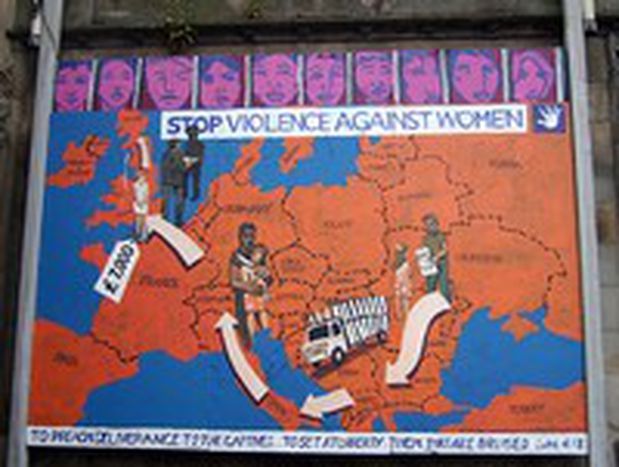
Violent men: Europe's static south-north gradient
Published on
Translation by:
Emily GriffinsCurrently, one in five women in Europe is a victim of violence. Despite the lack of official statistics, the situation in the south mirrors that of the north
Widespread shock ensued when the Finns discovered that more than 20% of their countrywomen had been subject to domestic violence. The 1997 survey, which interviewed more than 7, 100 women aged between 18 and 74 years old, was the first of its size in Europe. Unfortunately the reality that it revealed was far from desirable.
For many, domestic violence is simply a part of everyday life and very much a private matter. What happens behind closed doors does not concern anyone but those directly involved. However, things are changing. Supported by women’s organisations, the change was made official in the mid 1990s and is currently being overtaken by several large opinion campaigns, such as those of Amnesty International or the European Council.
Domestic violence is different to other disputes which can take place within a relationship. It is a continuous, chronic and increasingly intense kind of violence, ranging from verbal abuse to murder. It is not only physical and/ or sexual, but also rooted in psychological and financial problems. It has a definable structured to it. We often place the blame on society, which produces domineering male role models in possession of power. This is where aggression stems from.
The hollow absence of statistics
There are no official figures which provide an accurate indication of just how rife the problem is. Those that exist are based on police and judicial involvement and do not take into account the acts of violence themselves. Yet, in the case of domestic violence, the victims often hesitate to call the police, and when they do, their complaints are not always registered. What’s more, during the often long lawsuits, many withdraw their accusations.
It is only since the mid 1990s that enquiries began to take place, allowing the raw details to be revealed in the open. The sketchy situation is shocking: in Europe, between 20% and 25% of women have been subjected to physical violence by their partner. This adds up to more than one in four women.
The mythical ‘macho’ Spaniard
For all the stereotyping, men in southern Europe are no more violent than those in the north, for example in the UK and France. The same overwhelming statistics are rebounding the European continent.
In the Netherlands, a poll conducted in 1989 revealed that 20.8% of the women questioned had at some time in their lives been subjected to physical violence by a current or ex- male partner. Furthermore, 13% of the women had been subjected to sexual and/or physical abuse at the time of the poll.
In 1998 in Finland, 22% of married women or women living with long-term partners claimed to be victims of violence or threats from their current partners – an increase of 13% on the previous year.
In France the situation is no better, with six deaths per month attributed to domestic violence.
Further to the east, in Lithuania, a 1999 poll exposed that 42.2% of women living with a partner had been victims of violence.
In Hungary, a woman dies every week at the hands of a violent partner.
In 1996, 18% of Polish women were known to be victims of domestic violence: 9% on a regular basis and the other 9%, occasionally.
Another official report shows that neither social class, geographical location nor age is free from domestic brutality. The violence crosses the board. In addition, and in contrast to what is popularly misconceived, it is not linked to poverty, alcohol or drug consumption.
What does differ from country to country however is the dynamism of associative networks, and the actions of civil society and politicians. If you perceive the Iberian macho to be more violent, it is simply because Spanish associations are more heavily mobilised to change legislation.
The diversity of European reaction
There’s a notorious difference between the various political parties and the practical measures they take in tackling this issue. Three countries have stepped forward to adopt a national plan of action to fight all forms of violence against women: Germany, Spain and Sweden. Up to seven countries have a succinct plan of action against violence in general: Belgium, Croatia, Denmark, Latvia, the Netherlands, Poland and Portugal. A mere nine countries have allocated a specific budget for these action plans. Meanwhile Denmark and Sweden have a variety of refuges available for battered women, when some members of the twenty-five EU countries have none.
Violence against women remains a huge obstacle in the fight for male-female equality. For the time being, the European Union has only put one programme in place, ‘Daphne’, which finances projects against violence towards children and women. Until now, this field came under the responsibility of the member states.
For at least a year, the Parliament has been trying to highlight ‘violence towards women’ as a priority, and also its subsequent ‘green light for equality’. It is time to respond more actively. It is time to push forward genuine legislation to protect Europe’s women. The aggressors must be made responsible for their actions, and their aggression must be sanctioned.
Translated from « Les Européens du Sud ne sont pas plus violents que ceux du Nord »



